How to Use Wearables for Sleep Optimization (2025 Guide to Better Sleep)
Why You Should Care?
Ever feel groggy despite clocking in 8 hours? You’re not alone. Many of us binge-watch tip after tip, but have yet to master restful sleep. Simply here’s the good news, you don’t have to keep guessing about your sleep anymore.
Enter wearables for sleep optimization, your personal sleep detective, always on duty. From Fitbit to Whoop to Apple Watch, these devices are no longer just step counters. They’re powerful tools that can help you understand, track and improve every aspect of your sleep.
In this article, we’ll show you how to use wearables for sleep optimization step by step, so you can finally get the restorative sleep you deserve.
Also read – The Best Fitness Gadgets for 2025
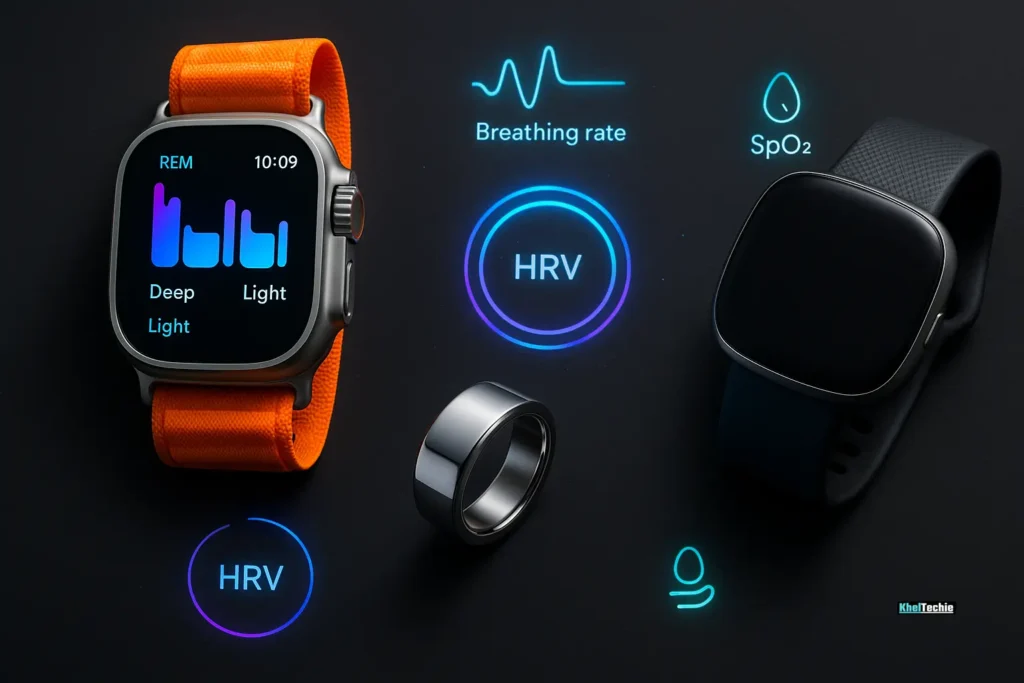
What Wearables for Sleep Optimization Actually Means?
Wearables like smartwatches, fitness bands and rings use sensors (heart-rate, movement, skin temperature) to map your sleep cycles. Imagine having a coach in your bedroom, quietly whispering, “Hey, you stirred at 3 AM—let’s adjust dinner time.”
Let’s break it down:
- Wearables: These are smart devices like watches or rings that monitor health metrics.
- Sleep Optimization: The process of improving sleep quality and duration using science-backed strategies.
- How to Use Wearables for Sleep Optimization: Using data from your wearable to make informed decisions that enhance your sleep hygiene and overall health.
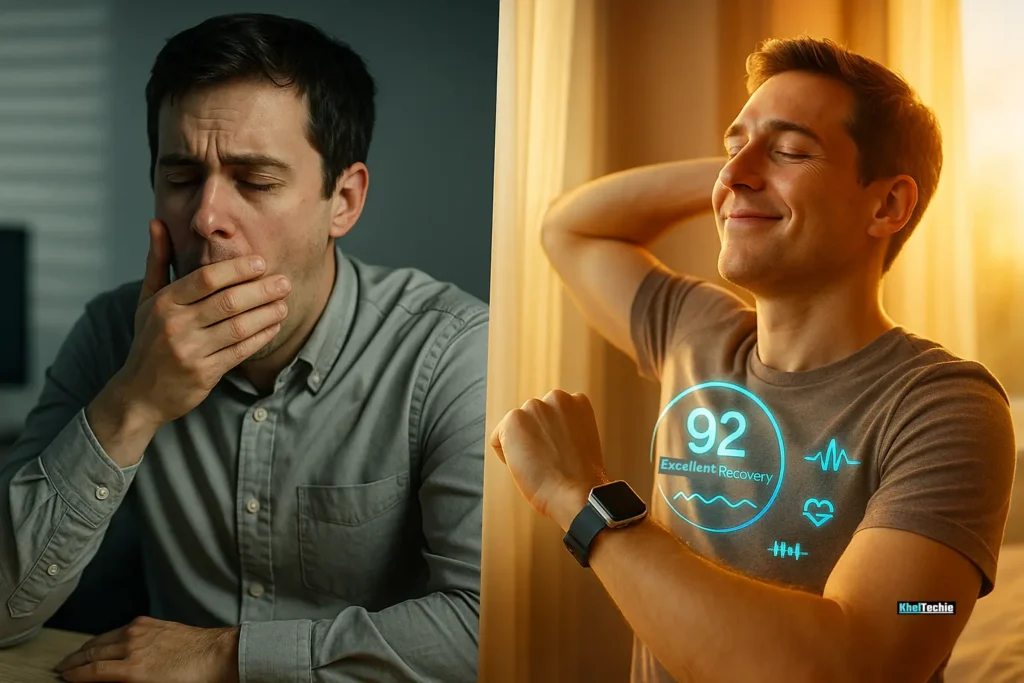
Why Sleep Optimization Matters
Wearables for sleep optimization are not just trendy gadgets, they’re fast becoming powerful tools that bring lab-level insights right into your bedroom. According to Northwestern Feinberg School of Medicine, a neck-worn wireless device can now monitor over 140 biometric signals like breathing patterns and heart rhythms and use machine learning to detect sleep stages and apnea more accurately than typical wrist trackers. That means people could potentially monitor serious issues from home without the hassle of clinical sleep studies.
Meanwhile, researchers at Medical Xpress report that as more people use wearables, the massive data being collected is shifting our understanding of “normal” sleep. This emerging dataset reveals how things like shift schedules, noise pollution and bedroom lighting affect our sleep, paving the way for smarter, AI-driven personalization techniques tailored to individuals, not generic age-based sleep norms.
Together, these developments show why wearables matter, they offer accurate, long-term monitoring for potential health issues and shift sleep science from broad averages to your unique patterns. But remember, these tools are most valuable when paired with thoughtful behavior adjustments. After all, better sleep isn’t just about numbers, it’s about feeling refreshed and ready for the day.
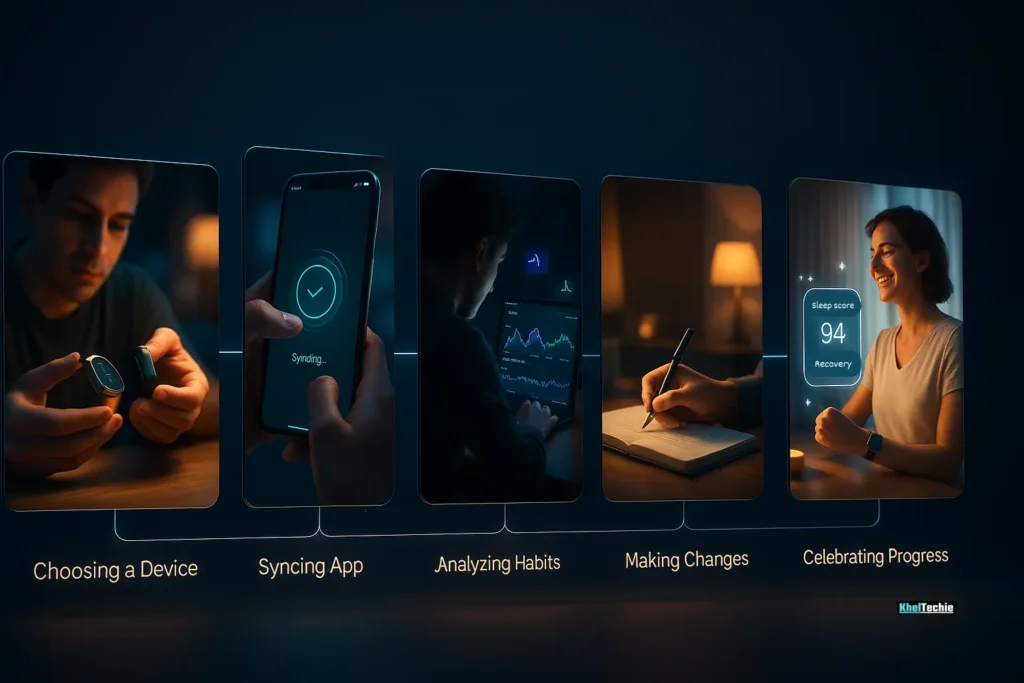
Step-by-Step Process: How to Use Wearables for Sleep Optimization
Now let’s dive into the actionable steps. This guide works whether you own an Apple Watch, Fitbit, Oura Ring, Whoop Strap, or Samsung Galaxy Watch.
Step 1: Choose the Right Wearable for Your Needs
Not all wearables are created equal. Here’s a quick comparison of top sleep-tracking wearables:
| Device | Sleep Stages Tracked | HRV Monitoring | Battery Life | Notes |
|---|---|---|---|---|
| Apple Watch | Yes | Yes | 18 hrs | Best with iOS; excellent integration |
| Fitbit Sense 2 | Yes | Yes | 6+ days | Great community support |
| Oura Ring 4 | Yes | Yes | 7 days | Discreet, highly accurate |
| Whoop Strap 5 | Yes | Yes | 14+ days | Focused on recovery |
| Samsung Galaxy Watch 7 | Yes | Yes | 1–2 days | Android users preferred |
If you’re sensitive to wrist pressure, consider the Oura Ring 4, it’s worn on the finger and doesn’t disrupt sleep.
Step 2: Set Up Proper Tracking Mode
Most wearables automatically detect when you fall asleep, but some require manual input. For best results:
- Enable auto-sleep detection
- Sync your wearable with its companion app (e.g., Fitbit, Apple Health)
- Calibrate if needed (some devices ask you to log bedtime manually)
For example, in the Fitbit app, go to:
Settings > Sleep Settings > Auto-detection = ON
Step 3: Understand Your Sleep Data
Once you’ve tracked a few nights, review your dashboard. Here’s what to look for:
a) Sleep Stages Breakdown
- Light Sleep: Helps transition into deeper phases
- Deep Sleep: Critical for physical recovery
- REM Sleep: Important for memory and emotional processing
Aim for at least 1.5–2 hours of combined deep + REM sleep each night.
b) Heart Rate Variability (HRV)
Higher HRV = better recovery. Low HRV might indicate stress or poor sleep.
c) Time in Bed vs. Actual Sleep
If you spend 8 hours in bed but only sleep 6, your sleep efficiency is low. Improve this by going to bed only when sleepy.
d) Consistency
Going to bed and waking up at the same time daily improves circadian rhythm.
Step 4: Identify Patterns Over Time
Don’t obsess over one night’s data. Instead, look at trends over 7–14 days.
Ask yourself:
- Do I sleep better after exercising?
- Does caffeine before bed affect my REM cycles?
- Am I consistently going to bed too late?
Use a sleep journal alongside your wearable to note:
- Caffeine intake
- Alcohol consumption
- Stress levels
- Evening screen time
Step 5: Make Adjustments Based on Insights
Here’s how to translate data into action:
| Problem | Solution | Wearable Tip |
|---|---|---|
| Poor REM sleep | Reduce evening blue light exposure | Check sleep stage trends |
| Low HRV | Practice mindfulness or cold therapy | Monitor HRV over time |
| Inconsistent sleep times | Set a fixed bedtime alarm | Track bedtime regularity |
| Waking up during the night | Avoid heavy meals/snacks before bed | Analyze restlessness % |
| Not enough deep sleep | Increase protein intake & strength train | Compare deep sleep scores pre/post workout |
Step 6: Use App Features to Stay Motivated
Many apps offer:
- Weekly summaries
- Personalized tips
- Sleep coaching programs
The Oura Ring app, for instance, provides a readiness score that combines sleep, activity and stress to tell you how prepared your body is for the day.
Apps like Whoop also offer recovery-based training suggestions, helping you avoid burnout.
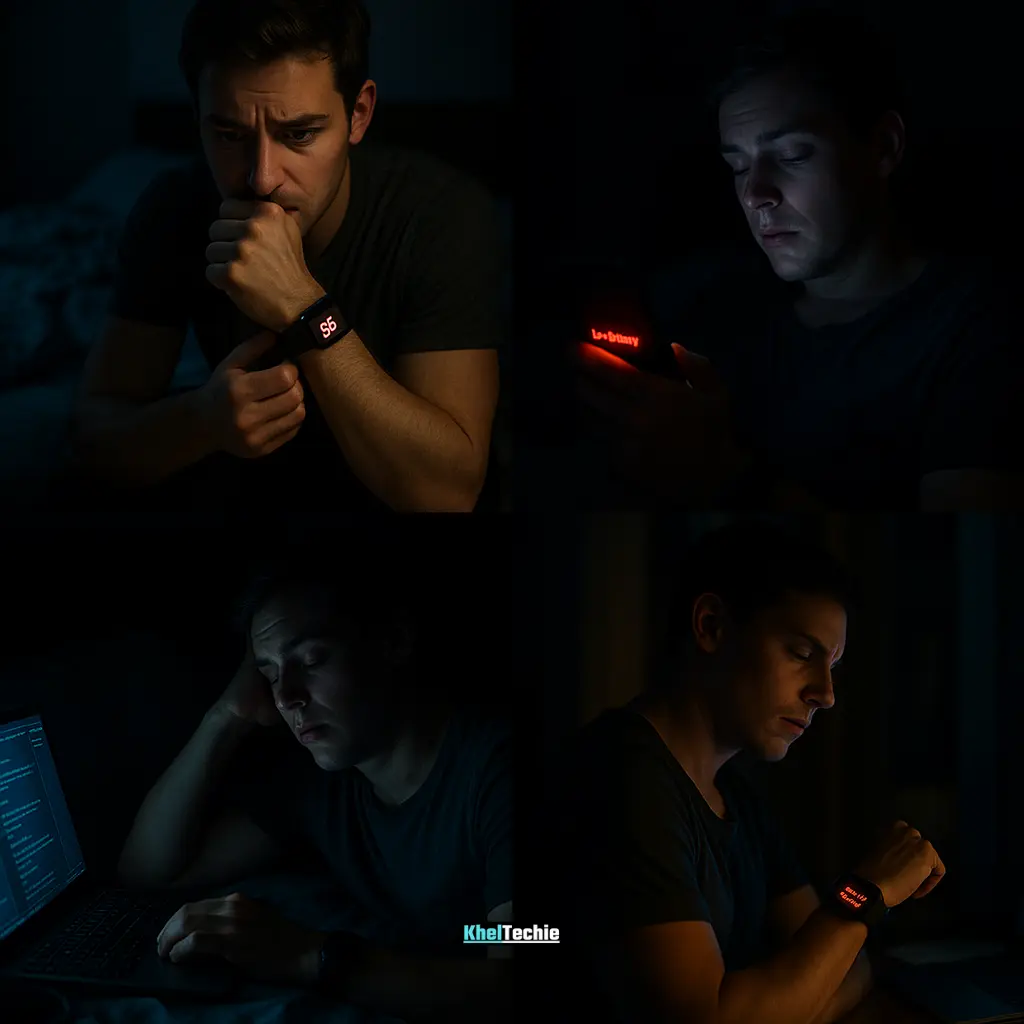
Common Mistakes to Avoid When Using Wearables for Sleep Optimization
Even the most advanced device won’t help if you misuse it. Here are the top pitfalls to watch out for:
❌ Misinterpreting Data
Don’t panic if one night shows low REM, It’s normal. Look for trends, not single anomalies.
❌ Relying Too Much on Technology
Your wearable is a tool, not a therapist. Pair it with good sleep hygiene practices like:
- Dimming lights before bed
- Keeping a cool bedroom
- Practicing relaxation techniques
❌ Ignoring External Factors
Your sleep score may dip due to stress, travel or hormonal changes. Context matters!
❌ Not Charging Your Device
If your wearable dies halfway through the night, you lose valuable data. Charge it nightly.
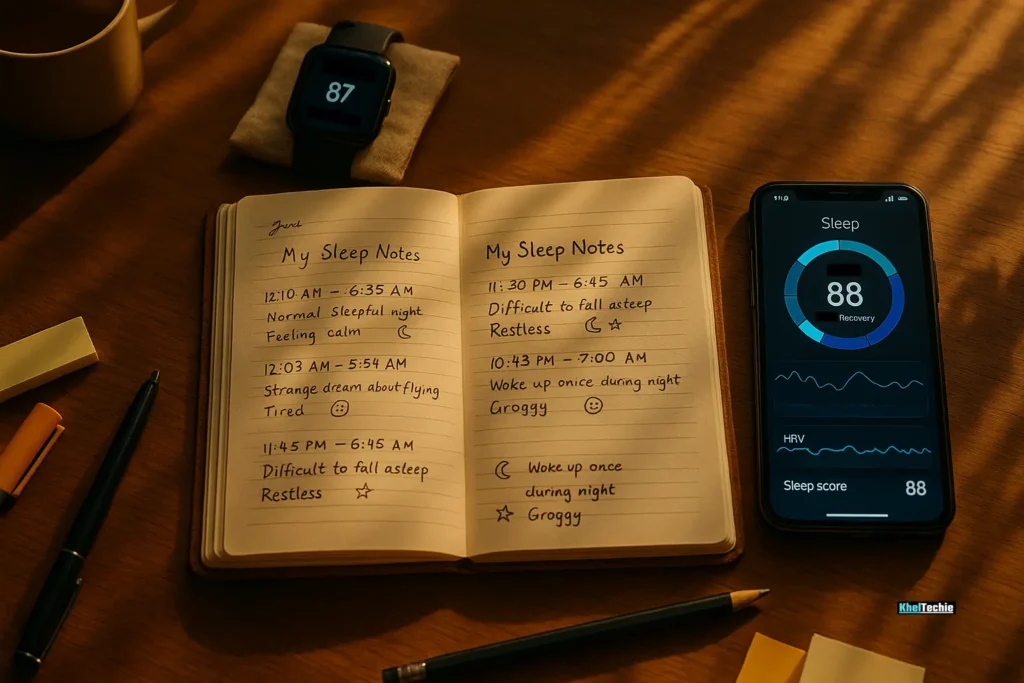
Your Takeaway & Action Plan
Re-evaluate monthly
Pick wisely: comfort + data clarity
Wear nightly, even for naps
Log behaviors, test small tweaks
Use insights like smart alarms & recovery scores
Avoid obsession, focus on habits
Also read – Best Fitness Tracker for Women in 2025
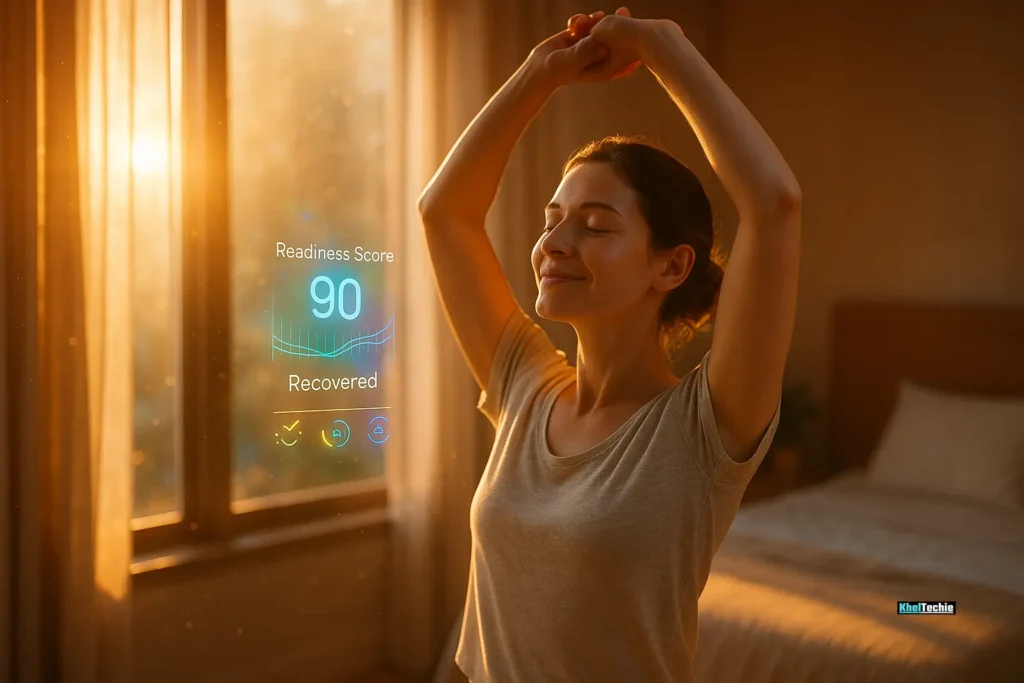
Final Thoughts: Take Control of Your Sleep with Wearables
Using wearables for sleep optimization isn’t just about numbers, it’s about understanding your body and making smarter choices. Whether you’re a night owl, a stressed-out student or someone battling insomnia, your wearable can be your secret weapon for better sleep. So start tonight. Put on your device, relax and let the data guide you toward the kind of rest that leaves you energized and ready for anything.
Did this help? Drop your wearable, habits, or results below! Share the article with friends who chase quality sleep—let’s rise and shine together!
This article is for informational purposes only and does not constitute medical advice. Always consult a qualified healthcare professional before making changes to your sleep habits, health routines, or using any wearable technology for diagnostic or therapeutic purposes.
Frequently Asked Questions
Can Wearables Accurately Track Sleep?
Yes, for sleep duration and wake times, accuracy is high (≥95%). Stage tracking is moderately accurate (50–80%), enough to spot trends, not diagnose.
Will wearables fix insomnia?
They’re tools, not cures. Used along with good sleep hygiene (no screens, consistent schedule), they help. But therapy might be needed for chronic cases.
Are smart rings better than watches?
Rings (like Oura) are lightweight and more comfortable, they often deliver superior comfort with fewer sleep disruptions.
Can Wearables Help Diagnose Sleep Apnea?
Some devices, like the Apple Watch, can detect irregular breathing patterns. However, they cannot diagnose conditions like sleep apnea. Consult a doctor for formal diagnosis.
How Often Should I Review My Sleep Data?
Review weekly. Daily checks can cause unnecessary anxiety. Use monthly trends to spot long-term improvements.
Can I Use My Phone Instead of a Wearable?
Phones can estimate sleep via movement and microphone (like Google Fit), but they’re less accurate than wearables. Also, keeping your phone near your bed increases blue light exposure.
How to deal with orthosomnia?
Limit data review to weekly
Focus on trends
Periodically take breaks from wearing
Use a sleep journal to reduce fixation
What’s a Good Sleep Score?
Most wearables rate sleep on a scale of 1–100. A consistent score above 80 is considered healthy. Below 70 indicates room for improvement.
Can I Improve Deep Sleep Naturally?
Yes! Try:
Regular exercise (especially resistance training)
Eating protein-rich foods
Sleeping in a cooler room
Reducing alcohol intake
Are There Free Apps That Work With Wearables?
Yes! Apps like Sleep Cycle, AutoSleep, and Google Fit integrate with wearables and offer basic sleep tracking features for free.

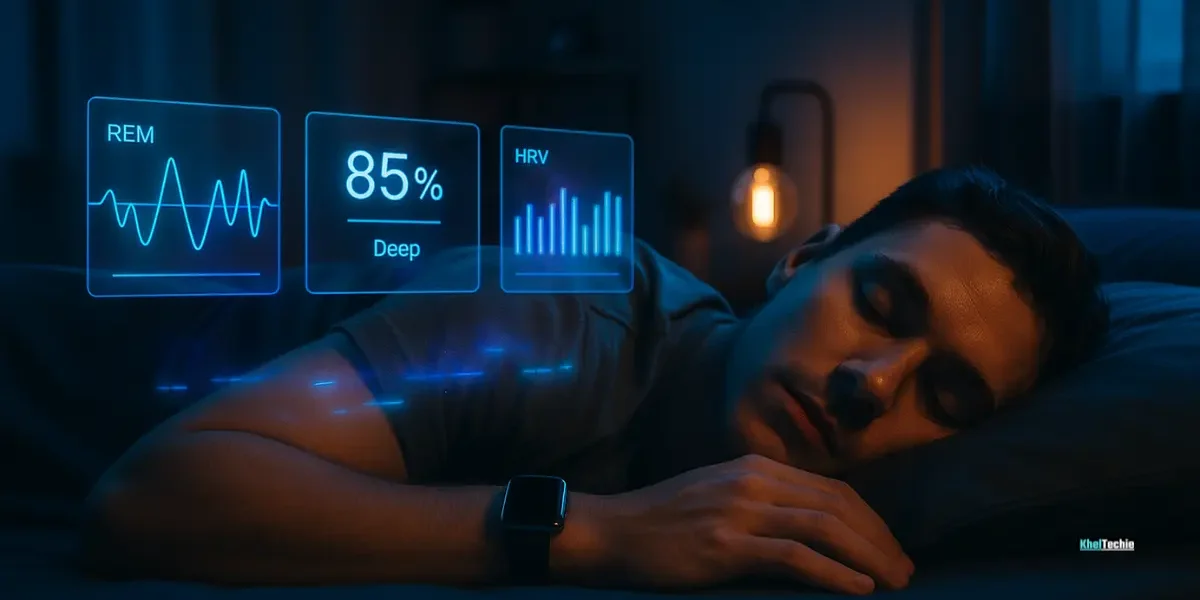

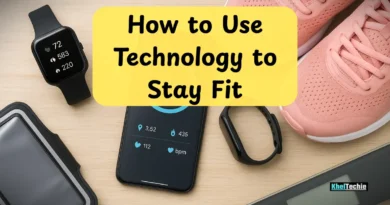
Pingback: How To Start A Gratitude Journal In 2025 For Mental Wellness